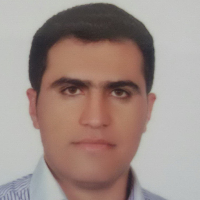A research on the ProductionTechniques and Themes of Mosul School of MetalworkCase study: the box and candlesticks of Badr al-Din Lu,lu
Author(s):
Abstract:
Traditional arts following the advent of Islam and the expansion of its scope weremaintained in the Islamic world with a view influenced by this religion. Art of metalwork which was considered one of the most significant traditional arts in this period managed to become one of the most functional and prominent arts in the Islamic world، specifically in Mosul، drawing on the heritage of this art-craft and innovation and creativity in production and various techniques of creation and design، engraving and carving various decorative themes consistent with Islamic world view. Mosul school of metalwork is one of the most exuberant and prominent schools of metalwork in the Islamic era، contemporary to the end of Seljuk reign and Ilkhanid period. During the splendor and prosperity of Mosul– during the rule of Badr al-Din Lu،lu (1233 - 1259 A. D. / 611-637 H.) – the Mosul artistsmanaged to offer to the patrons and purchasers the most significantmetalworks in terms of function and perfectness of form with which beauty and decoration are connected. Due to the importantplace of the Islamic era metalwork andthe unique position of Mosul school of metalwork، a study on the latter based on its methods and techniques of production and decoration of forms and aesthetic form of the pieces seem necessary. Therefore this paper seeks to determine the qualities of the school of metalwork، production techniques and ornamentation and the concepts of Mosul metalworks. Moreover in this study، two stances of works made in this style، the box and the candlestick Badr al-Din Lu،lu، have been examined and analyzed. The results of this study are as follow: the theme of “seated person holding a moon crest in his hand” is a special feature of Mosul school of metalwork، which has been examined for the first time. The fact that the decorative themes and motifs of Mosul metalworksreflect the continuity of Persian-Muslim artists’ experiences with an innovative identity، indicate that the traditional arts have always achieved sublimity and advancement in art through regarding history and innovation، forming itself a new tradition. The applied ornamentations in Mosul metalwork include animal decorations (human، animal، and birds)، inscription decorations with Naskh and Kufic scripts. As to the production technique of metal wares in Mosul، the Sasanian era common methods were followed. This production technique which was mainly the molding and casting method especially continued till the rule of local governors and emirs in Mosul like the rule of the Zangids especially Badr al-Din Lu،lu. In Mosul metalwork unlike Persian، Egyptian and Syrian، instead of engraving، works are inlayed with copper، silver and gold. This paper uses the descriptive-analytical method and analyzing documents as data gathering method.
Keywords:
Language:
Persian
Published:
Negareh journal, Volume:8 Issue: 28, 2014
Page:
27
magiran.com/p1287847
دانلود و مطالعه متن این مقاله با یکی از روشهای زیر امکان پذیر است:
اشتراک شخصی
با عضویت و پرداخت آنلاین حق اشتراک یکساله به مبلغ 1,390,000ريال میتوانید 70 عنوان مطلب دانلود کنید!
اشتراک سازمانی
به کتابخانه دانشگاه یا محل کار خود پیشنهاد کنید تا اشتراک سازمانی این پایگاه را برای دسترسی نامحدود همه کاربران به متن مطالب تهیه نمایند!
توجه!
- حق عضویت دریافتی صرف حمایت از نشریات عضو و نگهداری، تکمیل و توسعه مگیران میشود.
- پرداخت حق اشتراک و دانلود مقالات اجازه بازنشر آن در سایر رسانههای چاپی و دیجیتال را به کاربر نمیدهد.
دسترسی سراسری کاربران دانشگاه پیام نور!
اعضای هیئت علمی و دانشجویان دانشگاه پیام نور در سراسر کشور، در صورت ثبت نام با ایمیل دانشگاهی، تا پایان فروردین ماه 1403 به مقالات سایت دسترسی خواهند داشت!
In order to view content subscription is required
Personal subscription
Subscribe magiran.com for 70 € euros via PayPal and download 70 articles during a year.
Organization subscription
Please contact us to subscribe your university or library for unlimited access!




